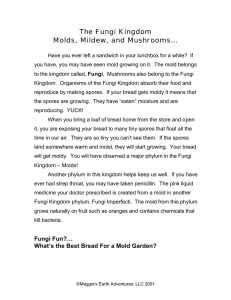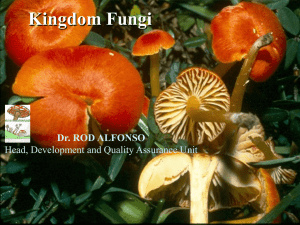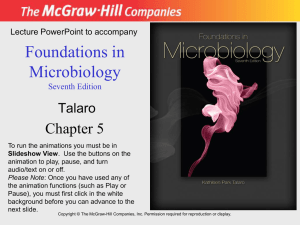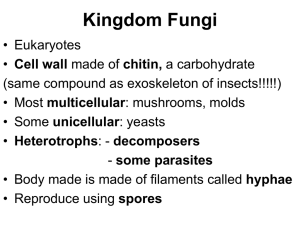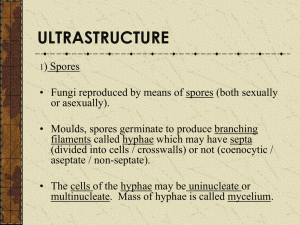Fungi Reproduction - Chapman @ Norquay School
advertisement
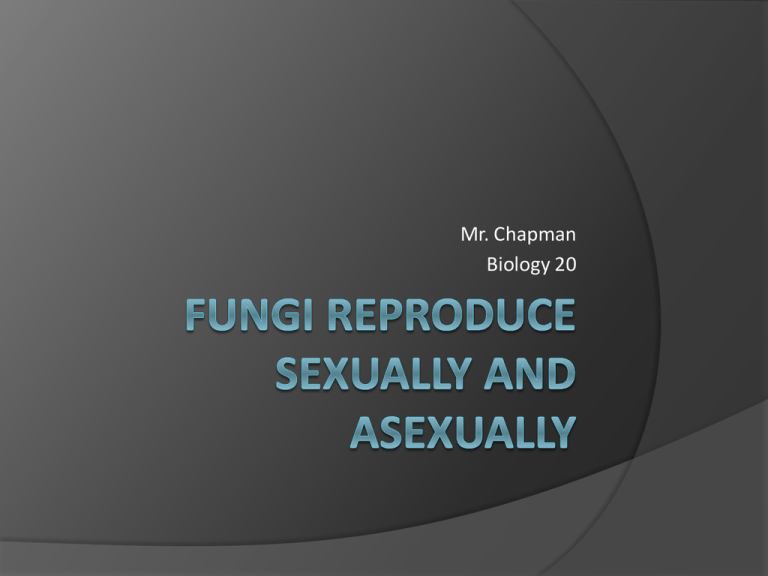
Mr. Chapman Biology 20 Fungi Have a Number of Reproductive Strategies Depending on the favorability of conditions, fungi will reproduce either sexually or asexually. During favourable conditions, fungi reproduce asexually. During non-favourable conditions, fungi will lean towards sexual reproduction. We will focus on two main groups (phyla) of fungi and their life cycles: Club Fungi and Bread Molds. Something to Think About... A Quick Note: Single-Celled Fungi Single-celled fungi, including some yeasts, reproduce sexually and asexually. There are two forms of asexual reproduction for single-celled fungi: Fission and Budding Yeah, we’ve all seen them... But have you eaten them? Characteristics of Bread Molds Form the molds you see on old, spoiled foods, such as the sandwiches I used to leave in my locker for months. Members of the phylum get food by decomposing dead or decaying matter. Asexual reproduction performed by spore production. Recall that spores are haploid (1n) gametes. Reproduction in Bread Molds Asexual Bread Mold Reproduction The sporangium bursts and releases spores (1n) to the surface that the mold is growing on. The spore produces hyphae (1n) under the surface of the bread, which develops into a network of mycelia (1n). Some hyphae (1n) grow above ground, and produce new sporangia that eventually release spores. Sexual Reproduction of Bread Molds Gametes (1n) of different mating types form at the tip of hyphae that are very close to each other under the surface. The gametes fuse, forming a diploid zygospore (2n). This zygospore has a tough, thick outer layer, and can remain dormant for an extremely long time. Later on, the zygote (2n) can produce a sporangium (1n) by meiosis, which grows into a new spore producing structure. These ones, you’ve actually probably eaten... Characteristics of Club Fungi Named for their club-shaped reproductive structures, called basidia, which are found on the undersides of mushrooms. Some groups of these fungi cause diseases in plants. Club fungi only reproduce sexually. Reproduction in Club Fungi Sexual Reproduction in Club Fungi Haploid nuclei (1n) within the basidia fuse to form diploid (2n) zygotes. Zygotes (2n) then undergo meiosis to form haploid spores (1n), which are then released and dispersed by the wind. Upon contact with the ground, the spores grow into hyphae of opposite mating types, fusing to form a diploid (2n) mycelium underground. The mycelium grows a new fruiting body (the mushroom), and the cycle repeats itself.




